#hong kong manhua
Explore tagged Tumblr posts
Text
So, instead of being productive, I decided to check out the first issue of the 1980s wuxia manhua series Chinese Hero: Tales of the Blood Sword by Hong Kong comic artist Ma Wing-Xing. It's nominally set in early 20th century China and the USA, and follows the exploits of Hua Yingxiong/Hero Hua (yes his name, 華英雄, literally means Chinese Hero), a martial artist dude and blacksmith's son who possesses the heirloom Blood Sword/Crimson Sword (赤劍), called so because it gleams a dazzling crimson red once it tastes blood.


This opening issue involves him avenging his (very badass in their own right) parents by fighting and slaughtering the greedy tycoon and the (perhaps a bit cartoonishly racist) western imperialist who killed them, then becoming a wanted man and fleeing to the US, meeting cool villains and really cool allies along the way. Oh, and fighting sharks and meeting a guardian water god.

(That other guy is NOT the water god)
That being said, I'm not sure I'd... recommend this to anyone. Not until I understand it better anyway. The aggressive Chinese patriotism might have had its place back in the 1980s, but its treatment of the topic of racism is pretty questionable. I know it's basically a given at this point that any Chinese martial arts story which features foreigners will inevitably result in an arrogant foreigner underestimating the hero (usually for being Chinese) getting the lights kicked out of him by said hero, proving that Chinese martial arts is thus superior after all, but the emphasis on avenging national pride, means we get a black antagonist (長人, "Tall/Long Guy") behaving exactly like the pure evil white ones and assuming he's physically and culturally superior... Except he's also extra threatening because he's Really Tall and Long-Limbed. At least he actually fights honorably, unlike some of the white villains? There's some outdated racial language as well. Then again, with a title where the hero is literally named Chinese Hero, I'm not quite surprised, so if you do read, do so with caution.
#chinese hero#chinese hero tales of the blood sword#hong kong comics#hong kong manhua#manhua#1980s comics
1 note
·
View note
Text
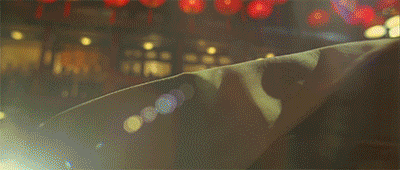

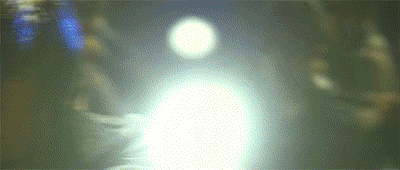
Nicolas Tse, Donnie Yen - Dragon Tiger Gate (2006)
#nicolas tse#donnie yen#wilson yip#dragon tiger gate#dragon tiger gate movie#龍虎門#manhua#hong kong cinema#hong kong action#action choreography
44 notes
·
View notes
Photo






When in Hong Kong’s Kowloon Park, visit the Avenue of Comic Stars, featuring life sized statues of characters from the local HK comic (Manhua) series.
126 notes
·
View notes
Text

Drunken Fist #13
Jademan Comics
4 notes
·
View notes
Text
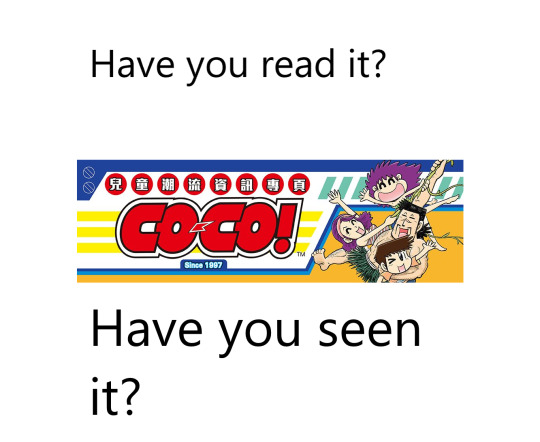
Samba Family is a very funny, long running Hong Kong manhua franchise about a rather cheeky family, created and produced by HK-based manhua maker Keung Chi Kit for Co-Co, the Cantonese equivalent of Shogakukan's Weekly Shonen Sunday. Dad behaves like a mix of Tarzan and Lee Falk's the Phantom, Mum's as stylish as Maureen O'Sullivan's portrayal of Jane Parker, the older son's a male equivalent of Clarissa from Clarissa Explains it All and Samba swings through trees like Tarzan's sidekick Boy himself. It's a bizarre but worthwhile read which frankly deserves some Anglophone attention as time goes by.
#samba family#the phantom#jane parker#manhua#hong kong#tarzan#weekly shonen sunday#clarissa explains it all#maureen o'sullivan#lee falk
0 notes
Text
九龍城寨之圍城 | Twilight of the Warriors: Walled In (2024)
I've rewatched this movie more than once, since seeing it in theatres back in August, and each time was just as good as the first if not better. Given that, I now have many thoughts so I'm subjecting y'all to listening to why you should watch it:
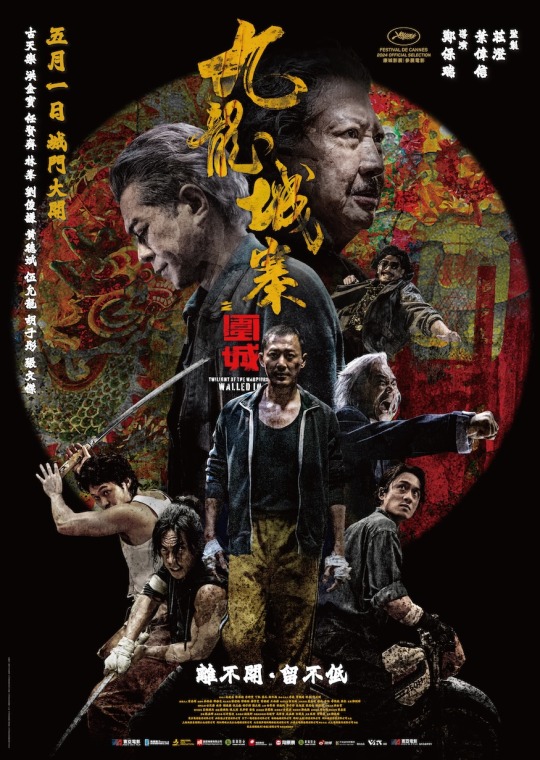
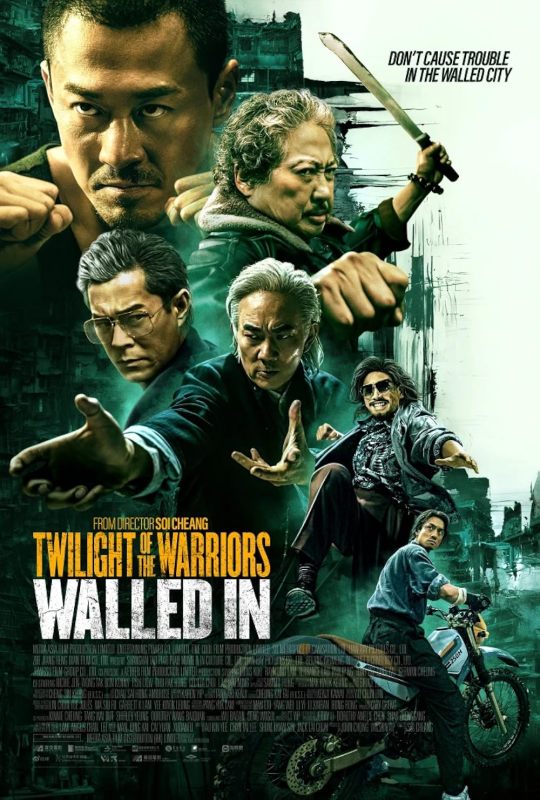
Twilight of the Warriors: Walled In (九龍城寨之圍城 or gau2 lung4 sing4 zaai6 zi1 wai4 sing4) is a martial arts action/crime film directed by Soi Cheang. It is an adaptation of the manhua City of Darkness by Andy Seto, and its source novel of the same name by Yuyi. The film's cast has established Hong Kong names folded in with newer-generation actors, starring Raymond Lam, Louis Koo, Sammo Hung, Richie Jen, Terrance Lau, Philip Ng, German Cheung, and Tony Wu (Aaron Kwok gets a cameo role, too).
At a broad glance, the movie follows several major triads in 1980s Hong Kong and their power struggle to control the Kowloon Walled City (a densely populated urban enclave, which for decades evaded direct governance by either the British colonial or Chinese powers in the area). We're introduced to the KWC and the triads' major players through the eyes of Chan Lok-Kwan (Raymond Lam), a man fleeing Vietnam and attempting to make a life for himself in HK. He winds up seeking refuge in the KWC, and comes to call both the city and the people he meets in it a home worth defending.
The narrative itself is not the most complex, but if you enjoy '80s Hong Kong films in these genres, it's solid fare and a harkening back to that decade. All the major themes like brotherhood (and brotherhood vs blood), vengeance, and struggle with conflicting loyalties are there, alongside an internal search for identity and belonging within Hong Kong. But the highlight in it is that the plot connects feast after feast of utterly stunning fight choreography, made all the more impressive by the fact that, according to Louis Koo, quite a few major cast members had never filmed this kind of action before. All their training was done just for TotW, and oh, does it pay off. I can't make good gifs, so you'll have to watch and see for yourself. It's not action for action's sake, either; listening to the head stunt choreographer discuss how different characters' fighting styles were crafted shows off how fight scenes aren't breaks in the story, they tell the story, and deepen our understanding of the characters.
The setting of the Kowloon Walled City truly makes the action in TotW stand out. It's a unique space to stage all these major fights, as the KWC's buildings at the time were packed together close enough to resemble a singular block from the outside. Once inside, it's a stacked, dark maze of uneven paths, stairs, and rickety roofs, with electrical and television cabling snaking over/around/through everything. Fight scenes in these streets feel thrillingly claustrophobic, with lots of acrobatics and near-dodges as characters navigate these tight alleys of the KWC. Each impact as a character goes flying into a wall, or is launched down a flight of stairs or onto a roof, is wonderfully visceral to watch.
All credit and hopefully awards are due to the production and set design teams for their work, in crafting this environment for the story and its fights. The visual/spatial representation of the KWC is the film's other glorious highlight, alongside the choreography. Whole streets of the KWC were recreated for this, filled with every mundane, period-accurate detail from the lives of ordinary people who would have lived there. It's impossible to catch all the intricacies put into making the KWC come to life again onscreen, just from watching the film. Shots like the credits sequence offer close-ups of harder-to-see details, and videos like a tour of the KWC set by Terrance Lau, acting as his character Shin, show off things from the drinks in the fridge at the corner store to the scribbled writing on the walls by the public taps. This film was designed with a drive to faithfully represent what the Kowloon Walled City had been like, how it looked when it was lived in, and they achieved it to an incredible degree.
That dedication extends to more than just the sets, though. The emotional core of TotW revolves around the KWC's inhabitants, and how they were the ones who made the city what it was, a home for about 35,000 people at a time. The film doesn't treat the KWC as just an eye-catching location to stage some fights; its characters might be fictional and overloaded with jianghu powers, but it goes out of its way to show how ordinary people might have lived, worked, and socialized within the historic city. It shows off why, despite its (not unwarranted) dark reputation, so many chose to live in a place that was once the densest urban center on the planet.
And this brings us to the acting, because the cast all do a very good job bringing their characters to life as the heart of the KWC. Louis Koo is fucking fantastic and arguably the scene stealer of the film as Cyclone, the triad leader in current charge of the KWC. He's grumpy, magnetic, and dangerous when he must be, but he also cares so very, very deeply about the inhabitants within his jurisdiction. Terrance Lau's Shin acts as his charismatic and capable right hand man, as well as protégé to Cyclone, befriending Chan Lok-Kwan and helping him become accustomed to life in the KWC. These two, along with the snarky Twelfth Master (Tony Wu) and the masked + imposing AV (German Cheung) become a quartet with great chemistry and friendship, the next generation to watch over and protect the Kowloon Walled City. Outside the KWC cast, antagonist figures like Sammo Hung, Philip Ng, and Richie Jen's characters are intimidating and compelling as threats to the city, and the lives people have etched out within its walls.
All of these things put together, and Twilight of the Warriors is a deeply fun, enjoyable, and rewatchable film (so good, in fact, that Hong Kong has submitted it as its nomination for the 2025 Oscars). The movie doesn't lose its emotional throughline in the promise of an action-packed ride it fully delivers on, and it uses its narrative, setting, and choreography to pay tribute to an earlier era of Hong Kong, as well as highlight + humanize a piece of the region's history that might not be quite as well known to some.
(The Kowloon Walled City was demolished and its inhabitants relocated in 1993. The area where it once stood is now a park, with some historic buildings preserved. If you're curious about people in the KWC before demolition, City Of Darkness: Life In Kowloon Walled City (1993) by Greg Girard and Ian Lambot is a collection of photographs and first-hand recountings from residents, recording their lives and stories. I'm in the midst of reading it right now.)
If anything I've said has piqued your interest whatsoever, I say to give Twilight of the Warriors a try, if you have a free two hours to spare. Something in it will be worth it for you. And if I've failed to convince you with any of this, or you need one more push, here's the trailer for the film:
youtube
And if I did manage to actually get anyone to seek out this movie, please tell me! I'd love to know your thoughts.
#hi i am NOT NORMAL about this movie come listen to me ramble about it!#twilight of the warriors: walled in#九龍城寨之圍城#ashton originals
83 notes
·
View notes
Text




#RPGaDay2024
RPG with Great Art
I did a whole series of posts looking at some of my favorite rpg covers: lovely, evocative, or just eye-catching. I love cover art and more than once I’ve bought games solely on that basis. Some have been hits (Cryptomancer), some misses (Children of the Sun). Considering interior and exterior art together is a little tricky…
Like…we live in a gaming world with Spire, DIE, and #iHunt. These offer amazing and consistent graphic design and illustration. So I want to talk about a different kind of great art: games with art that keep me from throwing the game away. These are games which I am fairly certain I will never get to the table. The system doesn’t click for me, it’s too complicated for my group, or even the genre isn’t a good fit. I’ve got several of these games: the old Heavy Gear ttrpg, Warmachine, Planescape.
But the grand-daddy of them is Weapons of the Gods. I love/hate this game. It has brilliant ideas, rich cultural material, and wild concepts. But it’s a mess system-wise. Definitively not what I want from a game. Even after playing a couple of sessions I can say I have no idea how it works.
But the interior art’s so good. Mind you it comes from a license, the Weapons of the Gods series apparently from Jademan comics. It is Hong Kong manhua of wild xianxia action. But it doesn’t feel like an adapted work because there’s so little context given. Like the book doesn’t really do anything to actually help you gain an understanding beyond a massive, continually info-dump.
And that’s OK because it's brilliant to look through. The interior art’s full color– something we’ve seen more and more in the last couple of decades. But it is bright, vibrant, and full range in that color. Too often we get rpg, full-color core books which have interesting art but it's muddied, washed out, and grimdark. Imperium Maledictum and a bunch of the 5e books have this problem. It reminds me of the failure of the Final Fantasy: Spirits Within movie. They had the FF franchise to work from and no costume or set budget limitations, so they went with the most greyscale and boring approach possible.
Weapons of the Gods is anything but boring. It is a hot, beautiful mess and I love it.
23 notes
·
View notes
Conversation
Reasons why I shouldn't be in KBTBB part 1
*Talking about how the dragons took Soryu to a gay bar in Hong Kong*
Baba: Did Sor tell you about that?
My MC: ... *shakes her head* ... Is that where you were that time you called me?
Soryu: Sorry I gave you the wrong idea, do you forgive me?
My fujoshi ass: If you tell me all the juicy details I might OuO
-.-.-.-.-.-.-.-.-
Bidders: What do you want? Clothes? Jewerly? Perfume? Shoes?
Me: I really just like to spend time with you guys ^^
Bidders: ...
Me: though if you insist there's a new console, and a new game and oh! my favorite anime/manhua/manga has new exclusive merchadise- guys?
-.-.-.-.-.-.-.-.-
Ota: She looks like she is deeply thinking about something
Hikaru: And she is blushing hard too
Soryu: just what on earth is she thinking?? *also low-key blushing*
Baba: my oh my, what kind of naughty things she must be thinking about
Me: *thinking about the beautiful, fluffy fic I read about my favorite ship*
#sorry about this#but if I have to suffer through my thoughts so do you#kbtbb#kbtbb shitpost#kiss by the baddest bidder#eisuke ichinomiya#Soryu Oh#hikaru aihara#Ota Kisaki#baba mitsunari#kbtbb baba#kbtbb eisuke#kbtbb soryu#fujoshi#self insert#kbtbb ota#voltage inc#voltage problems#voltage games#love 365#love365
52 notes
·
View notes
Text
The difference between Manga, Manwha, and Manhua.
Manga are comics from Japan. Manga is typically read from right to left. Manga is most easily distinguished from manhwa and manhua by its monochromatic format. While full-color front covers are occasionally found, manga is almost always published in black & white. Known popular manga includes Naruto, Bleach, Chainsaw Man, One Punch Man, One Piece, Kimetsu no Yaiba (Demon Slayer) and more. As there are so many different manga genres, there is something for every reader, no matter their age or interests. Examples of such genre are Shônen, Shôjo, Shoujo-ai and Shounen-ai.
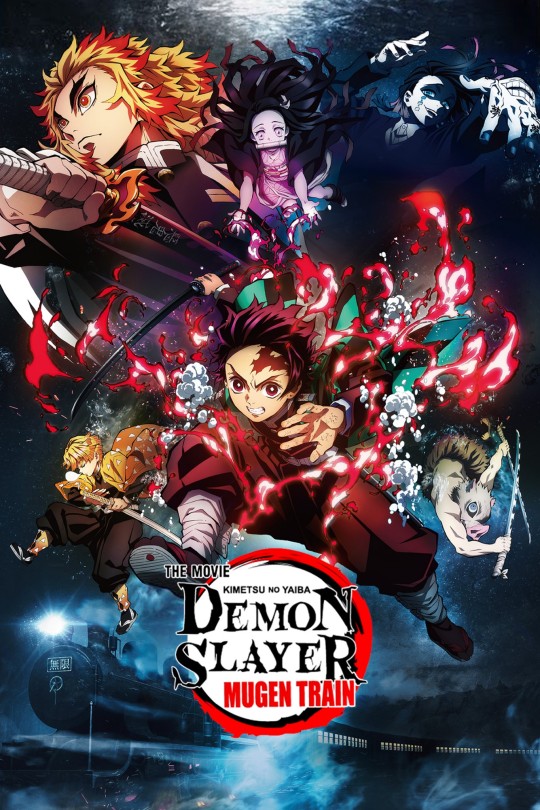

Manwha are comics from South Korea. While these comics and visual novels have many of the same traits as Japanese manga, there are also some significant differences. One of the most significant ones is that manhwa is read from left to right, just as comics and graphic novels that are written in the English language. Western audiences, who are more acclimated to this format, find it easier as a result. Another significant distinction is that manhwa, unlike manga, is frequently made in full colour, especially when it is released online as a webtoon. Examples include Solo Leveling, The S Class That I Raised, Omniscient Readers Viewpoint, and Trash of Count’s Family.
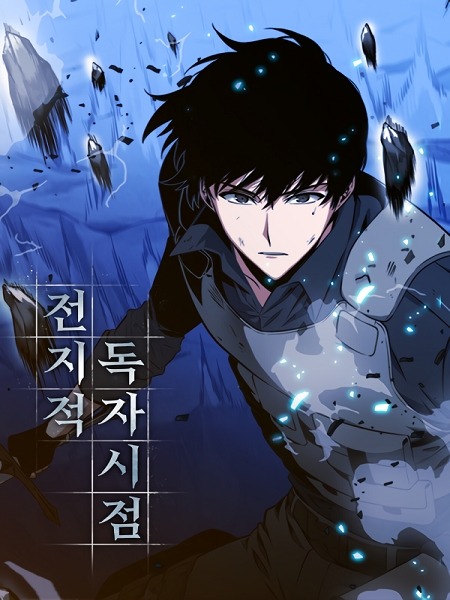

Manhua are comics from China, Taiwan, or Hong Kong. Depending on where they originate, manhua comics and graphic novels can be read either left to right or right to left. Manhua written in mainland China are typically read from left to right, while those from Hong Kong or Taiwan are commonly read from right to left. Manhua comics are typically created in full color as opposed to black and white, particularly in their more widely used electronic incarnations. Some known Manhua are Tiān Guān Cì Fú (Heaven Official’s Blessing) , Módào Zǔshī ( The Grandmaster of Demonic Cultivation) and Èr Hā Hé Tā De Bái Māo Shī Zūn (The Husky and His White Cat Shizun).
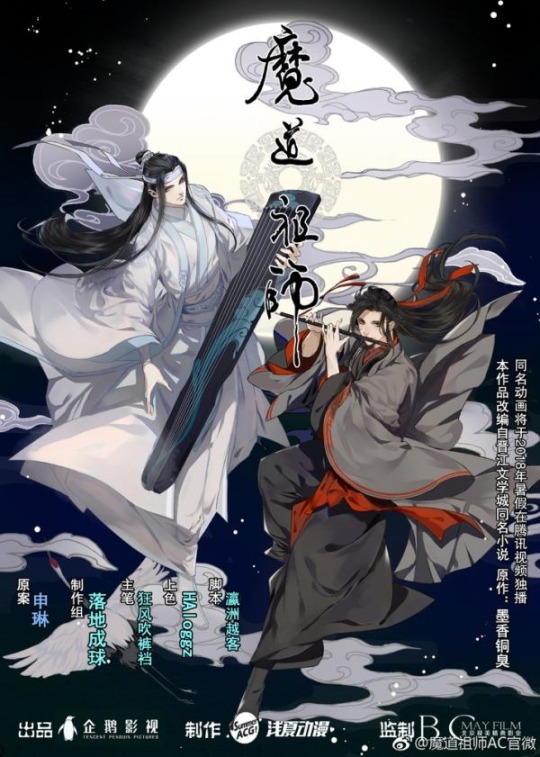

The Japanese word “manga” and the Korean word “manhwa” are both derived from the Chinese “manhua,” which translates roughly as “impromptu sketches.”
Now why did I pick this as my topic for my blog? Well because I love reading. Which includes manga, manhwa, and manhua. I’ve been reading since I was really young, it started from fairy tales then evolved to manga, then manhwa and manhua. I also found this topic really interesting because people are confused on which is which.
In my perspective people should be aware of the differences between the three of these so that they would not be confused when they search about it. Back then I also didn’t know the difference of these three and often than not I thought I was going to read a manhwa then it turned out to be a manhua.
I hope that this blog could help the readers to further understand the differences between Manga, Manwha, and Manhua. So that the next time they try to find them, they could differentiate and categorize the three.
3 notes
·
View notes
Text
'Twilight of the Warriors: Walled In' Delivers Flawless Action But Lacks Emotional Nuance
Set in a fictionalized version of the now-demolished Kowloon Walled City and based on the novel City of Darkness by Yuyi and the manhua of the same name by Andy Seto, Soi Cheang‘s Twilight of the Warriors‘s gritty and hard-hitting actioner delivers what we’ve come to expect from Hong Kong cinema. Though it’s an action spectacle in itself, it’s lack of depth prevents it from becoming something…
#City of Darkness#German Cheung#Kenny Wong#Louis Koo#Philip Ng#Raymond Lam#Richie Jen#Sammo Hung#Soi Cheang#Terrance Lau#Tony Wu#Twilight of the Warriors: Walled in#Well Go USA
1 note
·
View note
Text
Violent Gremlin
Name: Sage Pronouns: Any Zodiac: Capricorn Likes: Cats, Halloween, Autumn, Writing, Reading, Asian Dramas, Yaoi/Boy Love, Manga/Manhua, Tea Dislikes: Coffee, Hot Weather
Currently
Listening: Lofi Watching: - Reading: Neuromancer by William Gibson Playing: Shadowrun Hong Kong
About Me
Hello! I am Sage or sometimes gremlin or la goblina depending on who you ask. I don’t mind any of these, really. I am a huge danmei, yaoi/boy love fan, though I do not write fanfiction. Not my forte to write, but I love reading it.
I am an RPer, play video games, read, write, watch anime and Asian dramas. I do work from home fulltime with a sarcastic, lazy teenager. I do suffer from severe depression and anxiety so if I stop talking randomly, I promise it’s not you!
0 notes
Note
No contribution to the translation talk here xD just adding background.
I just saw @kurowrites in the notes talk about the 金麟 (as in lin of qilin) vs. 金鳞 (lin as in fish scale) versions of the name and had to share the post from MXTX on her weibo on the correction for this one.
Translation: 19 Sep 2016 I've done wrong by the Lanling Jin Clan. The name of their dwelling place is actually Jinlin 'Golden Scale' Terrace, but I just realised that I've been typing Jinlin 'Golden Lin' Terrace the whole novel, and it's only today that I found out while editing the manuscript... [gif of a person clutching their entire face and head with multiple hands]

// was just talking about the typos of webnovel authors (re: problems faced in translation) with some other fellow cnovel readers, and this one illustrates the point nicely LMAO xD
And because there's talk about poetry, how could I resist adding?
There's a famous quote from the famous Hong Kong wuxia manhua series 風雲 Fung Wan written by Ma Wing-shing / Dan Ching from the 1980s-1990s.
(Anyone here remembers the various Feng Yun / Storm Riders adaptations from the 2000s? I recall a couple of movies and dramas xD)
The first two lines - according to baidu - were given to Ma Wing-shing by the divination master Dong Mujie (also not fully of Mr Dong's own creation, because some form of line one already exists in older texts), and Ma Wing-shing liked it so much he wrote it into his story as a sort of prophecy for his main characters.
The first two lines were a prediction that encountering 'Wind' and 'Cloud' would be the antagonist's opportunity for great success. The last two was predicting that they would also be his downfall (Referencing 龙游浅水遭虾戏 / when a dragon lands in shallow waters, even the shrimp can bully him).
金鳞岂是池中物 jīnlín qǐ shì chí zhōng wù How could what is gold of scale be a creature of mere pond,
一遇风云便化龙 yī yù fēngyún biàn huà lóng an encounter with Wind and Cloud, and to a dragon it transforms.
九霄龙吟惊天变 jiǔxiāo lóng yín jīng tiān biàn To the highest heavens, the roar of a dragon - a sea change;
风云际会浅水游 fēngyún jìhuì qiǎn shuǐ yóu when Wind and Cloud join, the time comes to swim in shallow water.
FYI: There are online claims that the 'poem' comes from the Qing Dynasty historical novel about Yue Fei, 说岳全传 (General Yue Fei), in an introduction for his subordinate Yu Hualong, but I've control+f and skimmed through every mention of the dude and couldn't find such a thing.
And y'know, because MXTX does like her high school curriculum poetry, there is also my dramatic boy 李贺 (790 to 816) and his 雁门太守行 / Li He's Song of the Governor at Yanmen.
黑云压���城欲摧 | Black clouds bear down on the city, the city about to fall; 甲光向日金鳞开 | the armor, lit by the sun, bloom like gold scales [1]. 角声满天秋色里 | Battle horns sound through the air and Autumn scenery; 塞上燕脂凝夜紫 | at the borders, rouge congeals into night’s purple. 半卷红旗临易水 | Half curled, the red flag descends upon Yi River; 霜重鼓寒声不起 | frost lies heavy, the drums chilling, the sound unrising. 报君黄金台上意 | To repay My Lord’s favour upon the Golden Terrace [2], 提携玉龙为君死 | I raise my Jade Dragon sword to die for him.
[1] Here you have the 金鳞 as a reference the plates of the armor glowing in the sun.
[2] Reference to the urban legend of King Zhao of Yan's building the magnificent palace, Huangjin Tai / Golden Terrace, on the advice of Guo Wei to attract talents to join him.
Just wanted to comment on the Koi Tower translation issue: the Chinese words are 金鳞台, which can be translated as "golden" "(fish)scales" and "tower/ stage/ platform." Neither koi nor carp (鲤鱼)are explicitly stated, but the translators mostly have taken the golden scales to refer to a fish with golden scales, which could be golden carp/ koi. But another translation could be that 金鳞 refers to the golden shimmer of light reflecting off water, as referenced in a Yuan dynasty poem. (1/2)
*shrug* not even sure how that could be succinctly translated - Golden Light Tower? Dappled Gold Tower? Neither of which sound particularly great in English. Anyway, mainly popping in to agree with your comments about the translation, and wanting to point out that even the dichotomy of koi vs carp is an artificial limitation, since the words could be translated in other ways. Appreciate your very thoughtful analysis! – chaoticjoy@Ao3.
Okay that is extremely cool, I love that imagery. Thanks so much for sharing this, and for all your work on the MDZS resources! The golden shimmer of light on the water… that’s so lovely, and definitely fits in with the grace and beauty elements of other sect location names better than any particular fish. Dappled Sun Terrace? I don’t know either, but it definitely feels like there’s a sense of motion in the way you talk about it that is very difficult to capture in English.
I’m quickly coming to the conclusion that for at least some of these translations I personally would have preferred the retention of the Chinese name with an explanation in the notes, just for ease of reading. Especially for a fantasy novel, I don’t think it would be a huge barrier for most people, and the imagery is just so much more complex than can be accurately conveyed in a few simple location terms in English.
170 notes
·
View notes
Text
Comics I Read Today
April 15

The Force of Buddha’s Palm #46 (1992)
Jademan Comics published Hong Kong comics for a few years in North America. They were very unique and unlike anything being published at the time. In addition to the fast moving action and incredible martial arts moves, these comics were published in “full color” as opposed to the black & white of most manga or manhua. In this issue, Nine Continents is traveling to the Persian Holy Temple when he is attacked by Iron Boy. Some of the special moves the two exhibit have names like The Birth of Buddha and The Seventh Level of the Holy Blaze! It’s fun and exciting stuff but I don’t have a clue which of the two is the hero. I rarely found these comics in comic shops and it was always a pleasure to get one.
1 note
·
View note
Text

Jademan Comics' Drunken Fist #4
5 notes
·
View notes
Text
Q&A excerpt from a fanmeet/discussion event with Yuyi (余兒), author of the 九龍城寨 | Kowloon Walled City (Twilight of the Warriors) novels — June 2024
Translation made from a transcript written out in Mandarin; the live discussion took place in Cantonese. (x)
Q (提问者为男粉丝):"漫画和电影都产生了很多BL衍生现象(全场爆笑),想问下你对这个现象有什么看法?漫画作者司徒剑桥的画风很美型,当年我看漫画的时候就有想过会有BL,但电影我看一两次都没想到。"
QUESTION (note by transcript OP: person asking is a male fan): "Both the [Kowloon Walled City] manhua and movie have given rise to a lot of BL fanworks." [*crowd breaks out laughing*] "So I wanted to ask what your thoughts on that phenomenon are. Andy Seto's art style in the manhua is very beautiful, and the year I read it, I thought there might be BL [fanworks]. But even after seeing the movie twice I hadn't imagined this."
A:"整个电影团队都没想到。(全场爆笑)十几年前九龙城寨漫画刚出的时候,港漫还没有BL发生,九龙城寨应该是第一本有BL同人出现的。当时我去了RG(编者注:即香港的一个同人志漫展Rainbow Gala)看到有同人创作就觉得“点解会咁”(怎么会这样)?当然我不是介意,我是开心的,因为大家是因为喜欢你的角色所以才这样创作。当时的同人创作持续了两三年就慢慢淡去了,直到我没想到这个月我又去了RG,居然又看到了,我只能说这就是城寨的命吧。"
"后来我反思会不会是兄弟情去到某一个阶段某一个位置,就会让你有这样的联想。(其实这些同人创作)四子他们都有看到的,也都开心,但是他们未必有看到BL的故事,只是看到同人图而已。其实我不介意这些的,但是那些作者看到我就尴尬。在RG现场我看到一本叉烧饭封面(编者注:指之前余兒老师买的All信一本)的BL同人本,就买了当作珍藏,但我没看。那个摊主还掩面很尴尬,希望大家不要尴尬,都OK的。"
ANSWER: "The entire movie team hadn't imagined it either." [*crowd laughs*] "Ten years ago, when the KWC manhua had just come out, Hong Kong manhuas didn't have anything BL happening. KWC should have been the first IP here to have BL doujinshi made for it. At the time, when I went to RG (transcript note: Rainbow Gala, Hong Kong's first doujin comic-con), I saw some doujin fanworks and thought 'Why would this happen?' Of course, I didn't mind. I was happy, since it was because everyone liked my characters enough that they were making creations like this. The doujin works continued to appear back then for about 2-3 years before slowly dying down. Until I went to RG again this month, and I hadn't pictured that this would happen, but I saw them all once more. I can only say that this must be the fate of the Walled City franchise."
"Eventually I reflected on this, and whether or not the feelings of brotherhood [in the story] had reached a certain stage and place, that caused people to have this kind of association. The [actors playing the] Walled City Four have all seen these fanworks and they're pleased about it, although they've only seen the fanart, not the stories. Actually, I really don't mind all of this, but those creators feel awkward when they see me. At RG I bought a BL doujinshi that had barbecue pork rice on the cover*, just to keep as a collector's item, although I didn't look through it. The stall vendor was covering their face, and seemed very embarrassed. I hope people don't need to feel embarrassed! It's all OK."
*The book Yuyi bought and is referring to is a fully explicit fanfic compilation of different characters in the series railing Shin (信一). Do with that knowledge what you will.
#it's neat that he's fully aware of how the character relationships can be interpreted in different ways#and is not only happy people are running with it but has done the same thing himself tbh#(the knowledge that 龍捲風 and 阿占's story is inspired by romeo and juliet will haunt me forever)#anyways. i know people here don't care about this but it's still fun to hear creators' thoughts on people queering their work. so here#twilight of the warriors: walled in#九龍城寨之圍城#yuyi#余兒#ashton originals#ashton's translations
20 notes
·
View notes
